top dressing indoor plants ensures their full development. Potted soil quickly becomes scarce. Due to the lack of nutrients, the flowers stop growing, wither, the leaves may turn yellow. From the article you will learn how to feed indoor flowers and in what period it is better to do it, how to choose fertilizers for plant growth.
For growth and abundant flowering, plants need top dressing.
Fertilizers for flowers, especially those growing in pots, are necessary because plants deplete the soil. Transplanting into fresh soil helps to make up for the lack of nutrients, but only for a couple of months. Such frequent transportation of plants is useless, therefore, fertilizers must be applied to the soil.
If you have read articles about indoor plants, then you have probably heard that each of them has a period of active growth. Usually it falls on spring-summer - at this time the leaves actively grow at the flower, flower stalks develop. It is during such periods that top dressing for indoor flowers is necessary. Depending on the species features the period of active growth can occur in plants at different times.
Plant fertilization rules
Before choosing and applying fertilizer, you need to learn the basic rules:
- Overfeeding a plant with fertilizer is even more harmful than forgetting to do so.
- Flowers absorb fertilizer well during the period of active growth and flowering. But not everyone needs top dressing during flowering! For example, blooming orchids cannot be fertilized - the flowers will quickly fall off.
- In winter, the assimilation of nutrients by the plant is slower due to lack of light, therefore, feeding indoor flowers should occur less frequently. Plants with a pronounced dormant period (for example, succulents) do not fertilize at all in winter.
- If root feeding of plants is carried out with special solutions, it is necessary to prevent the liquid from getting on the foliage.
- Young plants need to be fed with weaker fertilizer solutions than adults.
- At different periods of vegetative development, different kinds top dressing. In the phase of active growth - nitrogen, with the development of peduncles and flowering - phosphorus-potassium.
- Before fertilizing, the soil must be moistened clean water so that the solution does not burn the root system.
- Do not feed recently transplanted, weakened, diseased plants.
- It is better to fertilize in the afternoon, when there is neither heat nor bright sunlight.
- Fertilizer for indoor plants should be complex. It is important to remember the compatibility of minerals. For example, magnesium is poorly absorbed when calcium is added, so they are not combined.
Signs of lack or excess of fertilizers in the soil
When a plant lacks nutrients:
The following signs indicate that the plant is overfed:
- Gray-white coating on the soil surface even when using soft water for irrigation.
- Lethargy of the leaves and drying of the tips.
- Poor growth of green mass, fragility of leaves.
- Decreased resistance to disease.
Important elements for plant nutrition
Fertilizer for flowers should meet his needs. It is no coincidence that stores sell separate complexes for flowering plants, decorative foliage and succulents. Plants with lush leaves require nitrogen fertilizers, and flowering ones contain phosphorus and potassium.
Fertilizers are: liquid, powder, tablet, granular, compressed. Liquid solutions are most well absorbed by the plant. There are also those that need to be dissolved in water and sprayed on the foliage. Complex store-bought fertilizers for indoor plants contain the main elements:
- Nitrogen, which promotes the development of plants. With its shortage, the leaves lose their color intensity, fade.
- Phosphorus is essential for full vegetative development. The lack of an element leads to fading of the leaves, inhibition of growth.
- Potassium is needed for lush flowering. If it is not enough, the plant does not bloom or the inflorescences become smaller.
- Sulfur. With its lack, the leaves begin to fade.
- Calcium. The lack of an element leads to the death of the crown of the plant, while the rest of its parts look healthy.
Types of fertilizers
All fertilizers can be divided into organic and mineral. Organic fertilizers for indoor plants are of plant or animal origin, mineral fertilizers appear as a result of the processing of raw materials, industrial waste, and the mining industry.
organic fertilizers
TO organic fertilizers include the droppings of poultry and animals (chickens, geese, ducks), vegetable composts, and peat bogs. Such dressings contain all the elements that improve the structure of the soil, provide better absorption by the plant mineral fertilizers further.
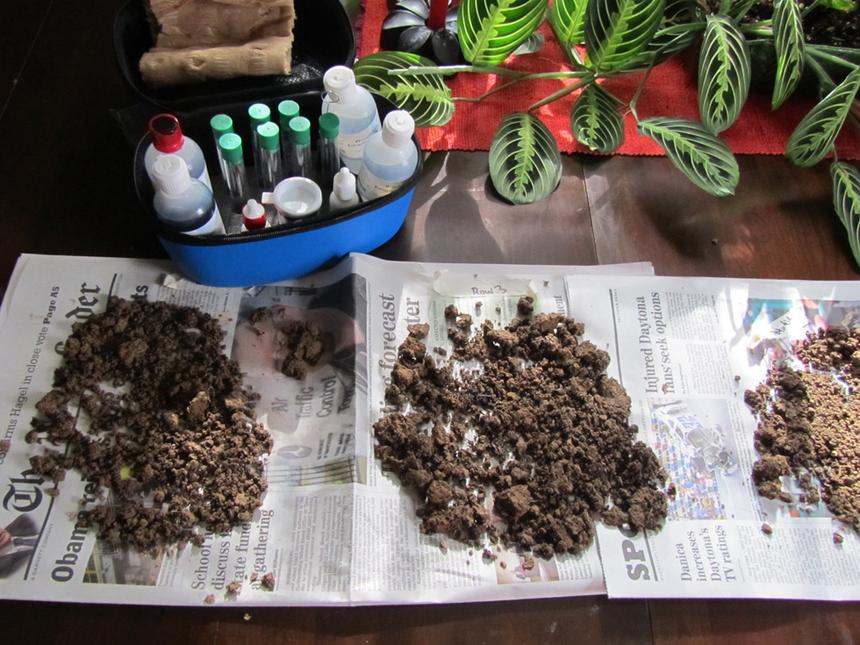
Organic fertilizers are added to the soil when transplanting.
Mineral fertilizers
Fertilizers of such a plan are necessary in the case when organic ones run out in the soil. They are divided into nitrogen, potassium, phosphorus. Among the nitrogen most in demand: ammonia, calcium, sodium nitrate, ammonium sulphate, urea. From potassium - wood ash, potassium nitrate, potassium sulfate. It is convenient to buy complex dressings, in which useful elements are already collected in acceptable proportions.
Top dressing during the period of active growth
In spring, plants need not only pruning of old shoots, soil replacement, but also increased fertilization. After transplanting, the plant must be given a month to adapt to new conditions, and then start feeding. When the flower takes root and grows, you need to use nitrogen fertilizers. Bulb plants or young cuttings should not be fed like this, as nitrogen can damage the young root system.
In the middle of spring, it is necessary to start applying potassium-containing fertilizers (potassium sulphide, potassium magnesia). They are usually applied by spraying or watering under the root. When flowering plants begin to form buds, preparations with phosphorus (superphosphates, ammophos) are used.
Phosphorite flour can be laid in the soil. To do this, half a teaspoon is stirred into 10 liters of soil. To stimulate the abundant ovary of flower stalks, plants need boron. The solution is prepared by stirring 0.2 g of the drug in 1 liter of water. Magnesium is also needed for abundant flowering, but it is applied separately from phosphorus, because in the complex the elements are poorly absorbed by the plant.
Fertilizers in winter
In winter, fertilizers are needed for plants that bloom or grow. all year round. These include azalea, violet, spathiphyllum, pelargonium, ficuses. However, in the cold season, top dressing should be applied less frequently, since the daylight hours are shorter - 1 time per month will be enough. Cacti and succulents are dormant in winter, so they do not need to be fed and watering should be reduced.
In order for the plant to continue to grow green mass and bloom in winter, complex fertilizers with nitrogen, phosphorus and potassium are used. Home remedies are also suitable - ash solution, sugar, iodine solution for pelargoniums. Sugar, for example, contains glucose useful for plants.

Sugar is actively used as a top dressing.
Glucose serves as an energy source for all plant life processes, but will not be absorbed if there is a shortage of carbon dioxide. Moreover, it can cause the development of root rot and mold. The use of sugar will make sense when combined with EM drugs (drugs of effective microorganisms). You can simply sprinkle the soil with sugar and then pour it with water, or you can dissolve a tablespoon of sugar in 500 ml of water for irrigation.
Remember that an excess of fertilizer for plants can be more detrimental to their lack. Choose a fertilizer according to individual needs and characteristics of the flower. Proper feeding is the key to lush flowering and active plant growth.
Plants are different - moisture-loving and drought-resistant, shade-tolerant and light-loving, and each group of species needs special fertilizers suitable only for it, but there is also a universal top dressing for indoor flowers. Let's find out what can be a source of nutrients for most crops.
1
For the most part, mineral additives are used as dressings, consisting of a number of chemical elements combined into complexes, or separated into separate concentrates. The most convenient way to feed is at the same time as watering, so many plant nutrition supplements are available in liquid form for making solutions. In addition, many fertilizer recipes that can be made at home allow you to get all sorts of decoctions and tinctures, which are also later added to water for irrigation. Liquid preparations are also good for foliar spraying.
Top dressing along with watering
Liquid fertilizers are convenient primarily because they are easiest to dose using special measuring cups or just teaspoons and tablespoons.
Another common option is top dressing in the form of powders. The smallest granules are quite easy to mix or dissolve in water, in addition, they can be poured directly into the soil, mixing with it and thus providing a direct. When watering subsequently, the powder gradually dissolves in the soil, saturating the plant with useful elements for a long time. Larger granules can be spread over the surface and will dissolve again during watering and as long as the soil is moist.
The third option is top dressing in the form of tablets that can be dissolved in water, buried in the ground, or scattered over the surface of the soil. As a rule, such fertilizers with complex mineral composition quite easily soaked from moisture, after which they can be mixed with the ground during loosening. And finally, a fairly popular type - mineral sticks. They are stuck deep into the soil to the level of the roots, after which they begin to slowly dissolve with regular watering. The advantage of such top dressing is that the elements necessary for the plant are released gradually, in small quantities.
2
It should be noted that almost all plants that grow at home in pots are called flowers, and the latter, as a result, are always called "floral". However, we should not forget that there are also decorative and deciduous crops, conifers, and, of course, flowering ones. Cacti can be distinguished into a separate group, citrus fruits and orchids, which require special care. And do not forget about the tree bonsai. Thus, we get 5 groups, each of which requires specific conditions acceptable only for its constituent species. This also applies to soil fertilization.
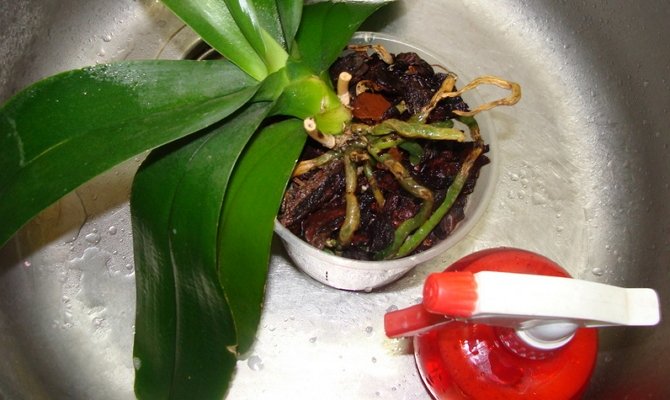
Orchid nutrition
As a rule, the consumption of mineral elements in decorative leafy and flowering plants differs quite significantly: the former actively consume nitrogen, and the latter - phosphorus.. At the same time, conifers prefer to have as little of both as possible. Cacti require a minimal amount of nitrogen, they can grow without it, but they need potassium to form flowers. Almost everything is important for orchids mineral elements, but their concentration in the soil should be extremely low. Citrus fruits definitely need potassium, without which the flowers will be small and crumbling, and the harvest will be insignificant. And, finally, almost all minerals are important for bonsai, they must come to the roots in very small quantities, but constantly.
But everything existing species crops are also divided into groups according to climatic zones, that is, according to the place of growth. For example, citrus fruits can be combined with all Mediterranean plants, and fertilizers for them can be used the same, they will be universal also for palm trees or pomegranates. Top dressings, which are produced specifically for orchids, can also be applied to acidophytes, that is, crops growing on acidic soils. Fertilizers for bonsai are applicable to other tree-like indoor crops, including conifers. Compositions that are suitable for cacti will be universal for all plants that have fleshy leaves and are able to store moisture, that is, for succulents.
3
As a rule, in complex dressings, one element can always turn out to be too much for a particular plant, and not enough for another. Therefore, in most cases, on containers with liquid fertilizers or on packages with loose granules, manufacturers indicate which crops the drug is intended for. But there are also separate top dressings that contain all mineral elements in small quantities. It is these complexes that are considered universal, since none of the components has a sufficient concentration to harm any plant.
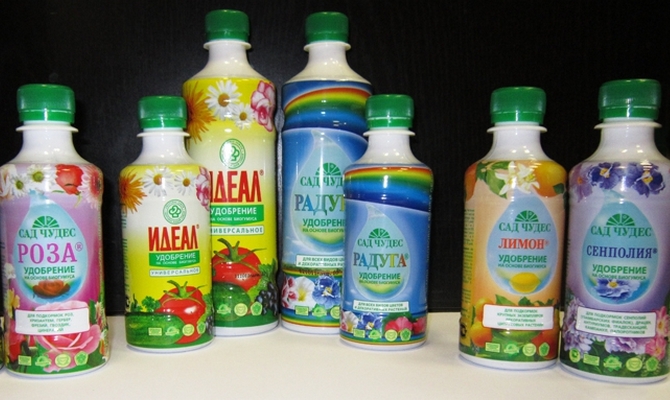
Fertilizers for flowers
However, it should be borne in mind that in a very moderate percentage of the constituents, some elements in the fertilizer may be in insufficient quantities. A lack of some minerals can have the same negative effect on the plant as an overabundance of others.. Therefore, using universal preparations as top dressing, it is worth adding the missing elements to the soil in the form of separate solutions or granules, or mixing them into water for irrigation. However, for regular feeding with frequent irrigation of indoor flowers, you can limit yourself to universal compositions, the plants themselves will take what they need from the soil.
4
Flower growers equally use both their own top dressings and formulations purchased in specialized stores. Moreover, the latter are often universal. In particular, the drug is quite popular Rainbow, component composition which is quite wide: 10 grams per liter of nitrogen, phosphorus and potassium, 2 grams of humins, there are also zinc, manganese, boron and magnesium. As a rule, a container with a liquid composition is supplied with a measuring cup, which to a certain extent facilitates its use. So, for enough 1 cap, which corresponds to 0.5 grams dissolved in 0.5 liters of water for watering every 2 weeks. For foliar spraying, dissolve 1 cap in 2 liters of water, using the liquid once a month.
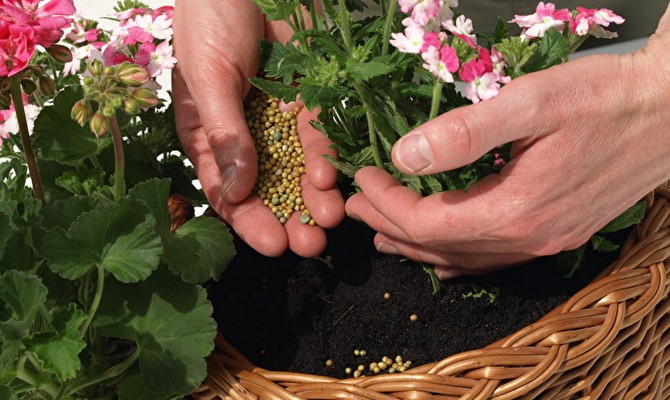
top dressing indoor flower
Another fairly well-known drug - Ideal, which is produced from the waste products of earthworms, that is, it is natural organic matter, and in liquid form. Among the components, in addition to humins, there are nitrogen, potassium and phosphorus, that is, the most necessary elements for most plants. For root top dressing, you need to knead 2 caps of the container in 1 liter of water, which corresponds to 10 milliliters, if you collect liquid to the brim. For each indoor flower, you need to spend no more than 200 milliliters of the solution once a week. For foliar applications, 1 cap per 1 liter of water is sufficient at the same frequency of treatment with the same amount of solution.
It is no secret that among indoor crops there are not only flowering and decorative foliage, but also fruit and berries. Moreover, the latter can produce crops all year round, that is, in the cold season, as long as a constant microclimate is maintained in the room. However, each plant has a period when insufficient lighting or low air humidity induce the root system and the aerial part to a state of rest. In order for the fruits to appear in winter, a special preparation is used. Snowflake, also considered universal. The composition contains nitrogen and phosphorus, potassium and magnesium, iron and copper, as well as cobalt, boron, manganese, zinc. Use by diluting 1 cap in 1 liter of water and watering the plants once a month.
Conditionally universal drugs can be considered Cactus and Palm. Their purpose can be easily judged by their names, but they are not highly specialized. The first is suitable for all succulents, accelerating their development and flowering, as well as protecting them from a number of diseases. Moreover, when buds form in such crops, they need to dilute 2 caps per 1 liter of water and water, alternating every other time with conventional irrigation. For stem succulents, tree fats and sedums, 1 cap per 2 liters of water is enough when watering 1 time in 2 weeks. Palm it is also suitable for feeding ficuses, as well as dracaena, yucca and monstera, being a humic natural composition. 2-3 caps (depending on the height of the plant - up to 0.5 meters or higher) are dissolved in 1 liter of water and used 200-300 milliliters per bush.
5
The most accessible today is humus from green manure or fallen leaves buried in the ground in advance. Feeding indoor flowers with various home remedies has certain advantages, in particular, this a budget option because purchased drugs are sometimes quite expensive. However, they do not use it in its pure form, or they use again purchased, granular, in which the nitrogen content is reduced to an acceptable amount. If a fresh, clean product is placed under the roots of a houseplant, the roots can be burned by an excess of humic acids. Therefore, it is better to use rotted humus mixed with peat, soil and a small amount of sand.
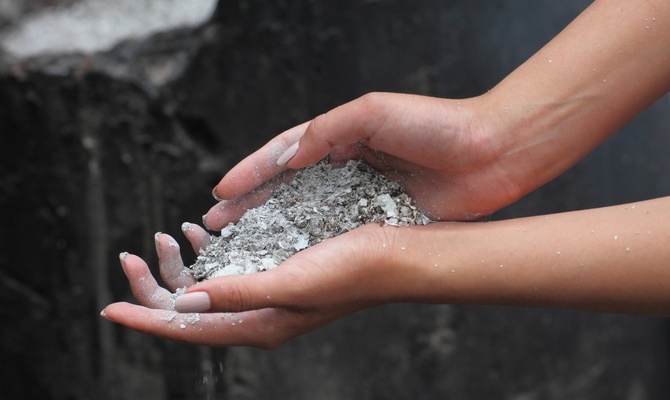
Ash for feeding flowers
Another natural type of top dressing is ordinary ash, and not every one is suitable, for example, the product from burning coal is not suitable, it is suitable only from burnt wood. This fertilizer is diluted in water for irrigation, or mixed with the soil in the process of loosening. Ash contains potassium and phosphorus, which makes it perfect for both ordinary flowering crops and exotic ones, including citrus fruits. In addition, it contains sulfur, magnesium, iron and zinc, as well as calcium, so this fertilizer is universal, equally suitable for garden and home flowers.
Various folk remedies has been in use for quite some time. Florists have discovered that even ordinary sugar can be used for the development of most crops due to the presence of glucose in it. But it is recommended to use the drug along with this product. Baikal EM, which, in fact, is a colony of beneficial microorganisms in a liquid nutrient medium. The fact is that sugar can cause the formation of foci of rot or harmful bacteria, so it is better that those organisms that you add to the soil yourself participate in its breakdown. Also, sugar can be replaced with glucose tablets, they do not contain anything superfluous and will immediately begin to participate in the development of indoor plants.
A universal remedy for feeding flowers of any group will be ordinary aquarium water, which contains quite a lot of useful substances and, most importantly, has a neutral pH level. But in summer it is not recommended to use it, since it can cause spontaneous development of fungal spores in warm soil. But back to natural products. Almost everyone at home has yeast, but not many people realize that they can be used as fertilizer for plants. This product is considered an excellent building material for indoor flower cells due to the presence of phytohormones and B vitamins in the composition.
And, finally, the most versatile top dressing is a nutritious cocktail made from onion peel. Raw materials are always at your fingertips, and fertilizer preparation does not take much time. It is enough to boil 2 liters of water and pour 50 grams of husks with it, which you can not even grind. Next, put the container with the workpiece on the fire and cook the contents for 10 minutes. Then we cool for 3 hours, this time is enough for the broth to also brew well. It remains only to strain the resulting product and use it for spraying plants. This infusion is best suited for foliar applications, since the substances contained in it will thus go directly to the aerial part of the indoor flower.
We all want the plants we grow to be beautiful, healthy and strong, so we diligently look after them, water them, and fertilize them. Among the many different fertilizers, a professional gardener will accurately choose the necessary top dressing for any of the plants. In this article, we will tell you about nitrogen fertilizers, their effect on plant growth, and the problems associated with both too little and too much nitrogen in the soil.
Listen to article
Why do plants need nitrogen
Nitrogen is essential for the proper growth and development of plants, since it is one of the main components in their nutrition and is involved in all metabolic processes, which led to the widespread use of nitrogen fertilizers in order to increase yields and improve the quality of crop products.
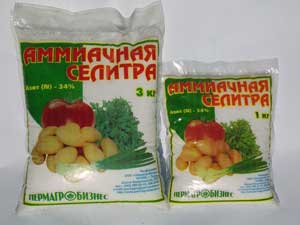 It must be said that nitrogen fertilizers are applied to any soil, since none of the types of soil is saturated with nitrogen in sufficient quantities for plants. However, the dose of applied fertilizers is directly dependent on the composition of the soil that is used for cultivating plants. For example, the soil poorest in nitrogen is gerbil, the richest is chernozem. Both the level of soil moisture and the degree of its cultivation should be taken into account. Well-cultivated soil with a constantly maintained moisture level of nitrogen fertilizers requires less than dry and long-term uncultivated.
It must be said that nitrogen fertilizers are applied to any soil, since none of the types of soil is saturated with nitrogen in sufficient quantities for plants. However, the dose of applied fertilizers is directly dependent on the composition of the soil that is used for cultivating plants. For example, the soil poorest in nitrogen is gerbil, the richest is chernozem. Both the level of soil moisture and the degree of its cultivation should be taken into account. Well-cultivated soil with a constantly maintained moisture level of nitrogen fertilizers requires less than dry and long-term uncultivated.
The fact that a plant lacks nitrogen can be determined by its appearance: the leaves of the plant turn pale, turn yellow and fall off quickly, growth slows down, and new shoots do not appear at all.
Of course, nitrogen fertilizers should be used even before these signs appear, without waiting until nitrogen starvation begins. There are three types of nitrogen fertilizers: ammonia, nitrate and amide. Each of these types has a specific action and uses.
Types of nitrogen fertilizers
The most widely used ammonia fertilizers are ammonium nitrate and ammonium sulfate (ammonium sulphate). Ammonium nitrate should be applied to the soil before or during sowing after preliminary liming of the soil. It is believed that ammonium nitrate is the most valuable view nitrogen fertilizers, since it contains a large amount of well-assimilated nitrogen, dissolves in water, acts quite quickly and is suitable for soil of any composition, and for all plants. However, such fertilizer should be handled with extreme caution, in no case allowing heating. ammonium nitrate because it is highly flammable and may even explode.
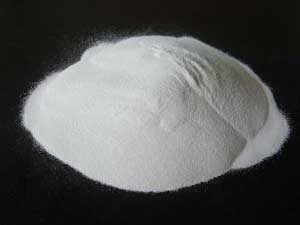 Ammonium sulfate is mainly used to fertilize plants that prefer an acidic environment, for example, rhododendrons, heather, cranberries, and from indoor plants - azaleas, camellias. It is also applied to soils oversaturated with lime.
Ammonium sulfate is mainly used to fertilize plants that prefer an acidic environment, for example, rhododendrons, heather, cranberries, and from indoor plants - azaleas, camellias. It is also applied to soils oversaturated with lime.
Nitrate fertilizers are not so in demand, but they have their advantages: they do not increase the acidity of the soil. Nitrates include calcium and sodium nitrates. It is better to use them not as the main fertilizer, but as a liquid top dressing. Store sodium nitrate in a dry place. calcium nitrate good for vegetable crops and flowering bulbous plants.
As for amide nitrogen fertilizers, their most famous type is urea (urea). Handling this fertilizer requires special care and caution, since its high concentration, if used ineptly, can lead to plant burns. You need to use it in the warm season, after mixing it with sand and be sure to evenly distribute it, but it is even better to use urea in liquid form. Urea as a fertilizer exists in granular and crystalline form. Crystalline urea is best used for foliar application, granular urea acts much more slowly, therefore it is inferior to other types of nitrogen fertilizers in popularity.
What plants need nitrogen
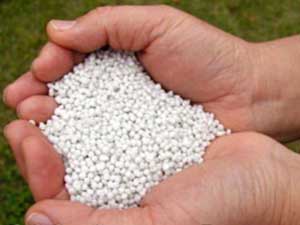 There are subtleties in using nitrogen fertilizers for indoor plants. First, you need to decide what you expect from your plants: if you want them to please you with a lush green crown, you should feed them with nitrogen more often and in large quantities. If you expect lush flowering, then you should not get carried away with nitrogen, since its excess slows down the process of bud formation. Secondly, the organization of proper feeding requires, so to speak, a species approach: for each type of plant, its own schedule. For example, rhizomatous (callé rhizomatous, irises), woody (lemons, oranges) and bulbous (
There are subtleties in using nitrogen fertilizers for indoor plants. First, you need to decide what you expect from your plants: if you want them to please you with a lush green crown, you should feed them with nitrogen more often and in large quantities. If you expect lush flowering, then you should not get carried away with nitrogen, since its excess slows down the process of bud formation. Secondly, the organization of proper feeding requires, so to speak, a species approach: for each type of plant, its own schedule. For example, rhizomatous (callé rhizomatous, irises), woody (lemons, oranges) and bulbous (
Complex fertilizers for indoor plants will help to admire the luxurious flowering and lush leaves. They saturate plants with nutrients, vitamin complex and increase resistance to fungal diseases. However, many indoor crops require individual care and react differently to the application of universal and other fertilizers.
1
After buying a houseplant, you should not immediately apply any fertilizer. As a rule, commercially grown plants go on sale, in compliance with all the rules for the timely introduction complex fertilizers. Therefore, such a plant is completely saturated with all the necessary elements, and in order to avoid an overabundance of certain groups of substances, it is recommended to start the first feeding no earlier than a month after acquiring an indoor flower. After transplantation, the frequency of fertilization is adjusted individually. It must take at least 3 months until the earth begins to deplete and it needs another recharge.
Indoor flower fertilizer
However, you should be especially careful with fertilizing the soil during the dormant period of indoor plants, from late autumn to the onset of spring. The same rule applies when diseases and pests are detected. Regardless of what fertilizer you apply to the soil, this should be done only after the soil has been thoroughly moistened. Do not apply them to dry soil (especially liquid fertilizers). This can lead to burns of the root system. Moreover, after watering the plant, 2-3 hours should pass before you can start fertilizing, and after adding them to the soil, we moisten the ground again.
2
By the appearance of your houseplant, you can determine the lack or excess of certain substances. For example, if the flower began to grow slowly, and the leaves become smaller and become pale green, this indicates a lack of nitrogen. In this case, ammonium, calcium and potassium nitrate, as well as ammonium sulfate and urea will help you to eliminate its deficiency. The yellowed edges of the leaves and their fall most often indicate a lack of phosphorus and zinc. Use regular or double superphosphate, phosphate flour. Fungal diseases, indicating a potassium deficiency, may be added to the symptoms listed above. It is recommended to use 40% potassium salt, potassium sulfate or potassium chloride.
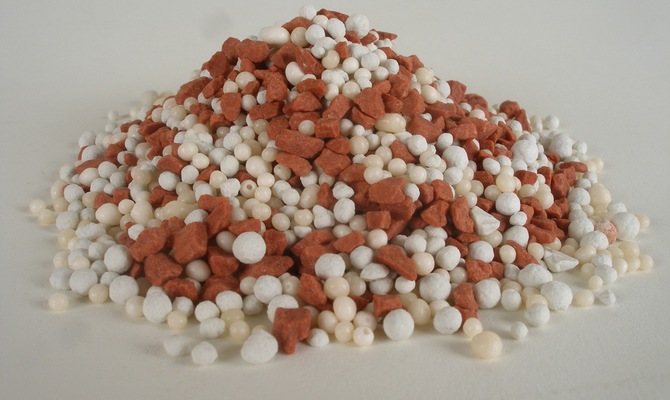
Nitrogen fertilizers for top dressing
The death of young shoots and a slowdown in the development of the root system, the stems of the plant should prompt the lover of indoor crops to think about the lack of calcium, which can be easily eliminated by using calcium sulfide and calcium nitrate as a top dressing. Similar symptoms plus stunted growth, pale leaves and delayed flowering can be signs of a magnesium deficiency. The light yellow shade of the leaves can be the cause of improper watering or insufficient iron. In this case, it is recommended to feed the houseplant with iron chlorides or sulfates. The loss of leaves or the weak intensity of their growth often cause a lack of manganese, which can be replenished with sulfates.
Growth point dying off poor flowering and the lack of fruit-bearing functions in some indoor crops results from a lack of boron. The best solution to this problem would be to feed a withering plant. boric acid. Are yellowing, dullness, strange spots and curled leaf tips added to the listed symptoms? Then you should seriously think about the deficiency of molybdenum, the lack of which is easily eliminated with the help of ammonium molybdate. However, you should not forget about the excess of these substances. This is especially true of copper, which in large quantities causes gradual fading.
3
Now in stores for the care of indoor plants there is a large assortment of complex, universal and organomineral fertilizers. Recently, universal fertilizers are gaining more and more popularity. Kemira and Fertika Lux, which are mainly composed of nitrogen, phosphorus and potassium. Additional components include boron, iron, manganese, copper, zinc and molybdenum. Can be used as a root top dressing and foliar spray. Good organomineral fertilizer for better development root system is and Radipharm. It provides good survival of seedlings and plants after transplanting it into a new soil.
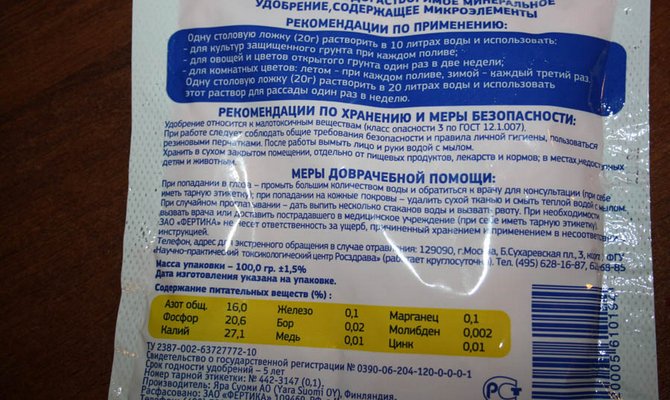
Fertilizer description Fertika Lux
Among liquid fertilizers it is worth highlighting Uniflor. It contains about 18 essential trace elements, most of which are presented in the form of chelated or complex organic compounds. However, the best liquid fertilizer for indoor crops is still considered Bona Forte. It is universal. The rich composition containing elements of the chelate form, as well as nitrogen, phosphorus, potassium, iron, magnesium, manganese, boron, zinc, copper, molybdenum, cobalt, succinic acid significantly expands the range of applications. This is a wonderfully balanced complex for plants, providing growth, development, long flowering and bright coloring of the leaves. Can be used as root or foliar top dressing.
4
Organic fertilizers are the elements necessary to maintain the vital activity of crops. A special role is played by humus, which is considered universal. It is nutritious and easily available and has many benefits. However, despite the versatility, there are a number of indoor plants that need a certain type of top dressing. For example, dieffenbachia, monstera, ficuses, palm trees, citrus fruits prefer humus from bird droppings, and not mullein. However, mullein should be used carefully for other houseplants, using it for large and fast-growing plants, such as roses, primroses, asparagus.
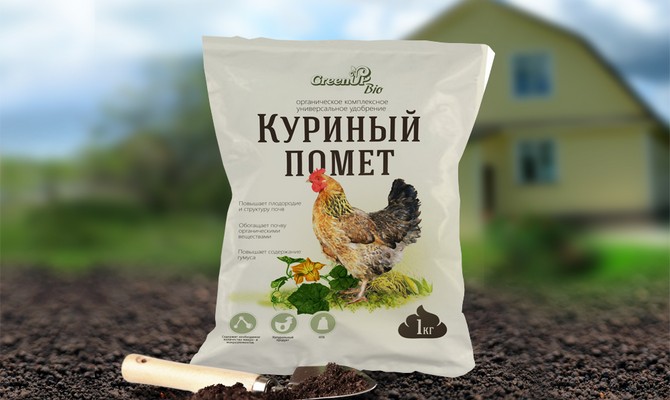
chicken manure as fertilizer
To use bird droppings for 3 liters of water, you need 10 g of organic matter. In order not to burn the roots, first water the plant with ordinary water, and then with an organic solution. Mullein infusion is prepared at the rate of 1 tbsp. l. per liter of water.
With caution, organic matter should also be used to fertilize variegated crops so that their leaves do not become completely green and do not lose their natural color. But tuberous and bulbous indoor flowers do not perceive organics at all, in particular gerberas. When using humus as a top dressing, be prepared for an unpleasant odor that will completely disappear after a couple of hours. Therefore, it is best to apply such fertilizers during plant transplantation. This will reduce the unpleasant odor and increase the looseness of the soil.
5
For those who do not have time to read the composition of complex fertilizers, select dosages and prepare complex nutrient mixtures, manufacturers offer dry dressings and special sticks. The first of them is a complex of necessary salts in granules or powder. Dry dressings are diluted in water, following the instructions in the instructions. They dissolve easily in liquid without leaving sediment at the bottom.
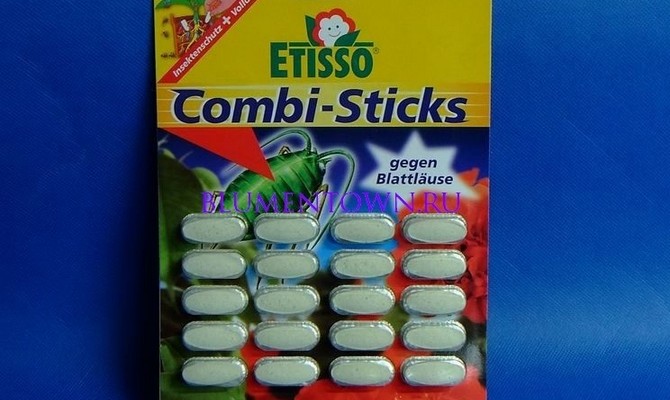
Dry sticks for plant fertilizer
The second option is food sticks. They are cylindrical bars that are inserted into the soil with the plant. With each subsequent watering, the sticks dissolve and come in dissolved form to the root system of the flower. Thus, fertilizers gradually saturate the soil and nourish the plant, which makes it possible to forget about fertilizing for a certain time. However, this method has its drawbacks. It is impossible to control the required dose during different phases of plant development, and also to determine the very moment when the action of the stick will end.
6
One of the most popular household fertilizers is ordinary sugar. His effective impact on the vital activity of indoor plants is determined by the content of glucose, which acts as an energy source and building material of complex molecules. True, in order for the second condition to be fulfilled, glucose must interact with carbon dioxide. Provide such chemical reaction helps the use of EM drugs, for example Baikal EM-1. Otherwise, the lack of carbon dioxide in the root zone can backfire, causing mold and rot.
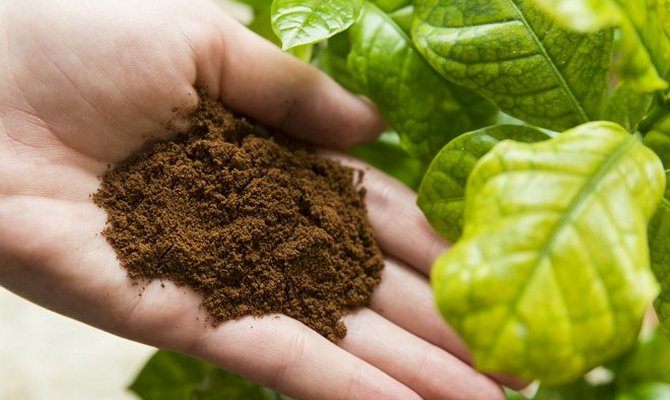
Feeding plants with coffee grounds
To prepare a sweet top dressing, dilute in 0.5 l warm water tablespoon granulated sugar and water the plant with the resulting solution. Do this watering no more than once a month. This will allow you to heal the plant without harming it.
Instead of sugar, you can use glucose, which is sold in a pharmacy. That will be even better. Dilute one tablet in a liter of water. Water or spray the plant as in the previous method. As an alternative to store-bought nitrogen fertilizers, use coffee grounds to feed houseplants. After drinking a cup of insoluble coffee, do not throw away the grounds. Mix it with damp soil and lightly water the plant again. However, keep in mind that coffee grounds are a natural source of nitrogen, which, together with an increase in plant growth, leads to an increase in soil acidity, for which not all flowers are ready. Such home crops include lilies, roses, azaleas, gladioli, rhododendrons.
Instead of coffee grounds, many people prefer to use tea brewing. Although this method is considered no less effective, it still has significant drawbacks, the main of which is the appearance of black flies - sciarids.
7
Once you've peeled your citrus fruits, don't rush to throw away the peels, as they'll make a great base for feeding your houseplants. For the first version of citrus infusion, fill about a third of a three-liter jar with peels, pour boiling water over them and leave for a day. The next day, we take out the peels, add the necessary amount of liquid to the infusion to bring the solution to its original volume, and pour indoor flowers on them.
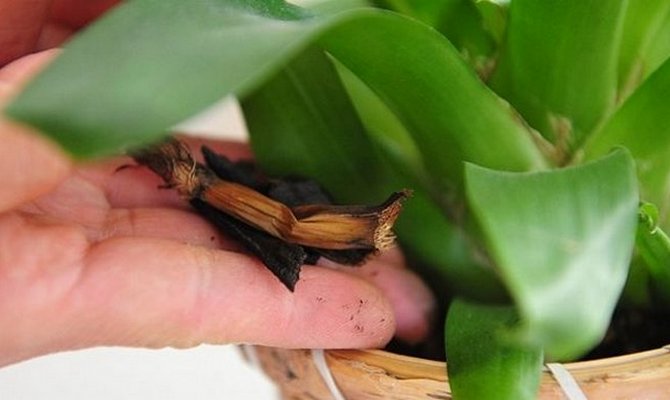
Banana peel as a top dressing
For the second fertilizer option, in addition to citrus peel, you will need banana skins. Grind an equal amount of these ingredients and also fill them with a third of a three-liter jar, add 2 tsp to the same. sugar and pour everything warm water. We stand this composition for 21 days, not forgetting to shake it periodically. At the end of the specified time, you should get a light yellow liquid. The present mix is perfectly stored in the refrigerator. Before use, dilute the infusion in proportions of 1:20 with clean water and water indoor plants with it once a month.
Banana skins can also be used as an independent base. The potassium contained in the peel favorably affects the flowering and growth of indoor crops. Of these, you can prepare a nutritious cocktail, as in the previous version, only without the use of citrus peels, or you can find them dry. To do this, pre-dry the banana skins at the minimum temperature in the oven or on the battery. When they darken and become brittle, grind them and send them to the coffee grinder. The resulting powder is used once a month for feeding or during plant transplantation, slightly crushing the top layer of soil with it, or mixed with the ground in a ratio of 1:10.
8
It turns out that yeast is an excellent growth stimulator not only for flour products, but also for indoor flowers. And all thanks to the content of phytohormones, auxins and B vitamins in them. Cytokinins can also be distinguished as special substances that help regulate the process of cell division. When using yeast as a fertilizer, the activity of microorganisms in the soil increases, faster mineralization of organic matter and the release of carbon dioxide occur.
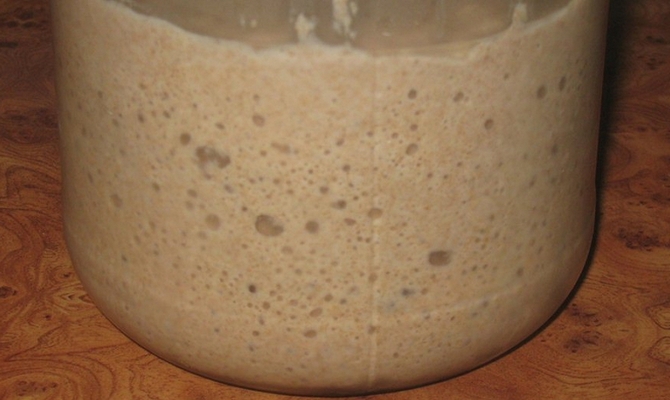
Yeast feed mix
Therefore, yeast-based top dressing can be safely attributed to the category of mineral fertilizers. To use them, dilute 10 g of yeast in a liter of warm water. In the case of using dry yeast in such a solution, add 3 tbsp. l. sugar to enhance their effect. Let the solution stand for 2 hours. Before use, dilute the yeast infusion with water in proportions of 1:5 and water the plants.
Along with yeast, succinic acid is considered a good growth stimulator for indoor crops, thanks to a wide list of useful macro- and microelements. Dilute 1 g of succinic acid in 5 liters of water. Water or spray houseplants with the resulting liquid. Chlorophytums, begonias, aglaonemas, ficuses, prickly pear, crassula and haworthia respond especially well to such top dressing. However, remember that you need to use succinic acid-based make-up once a year. Otherwise, a reverse reaction may occur, the plants will begin to rot and die.
